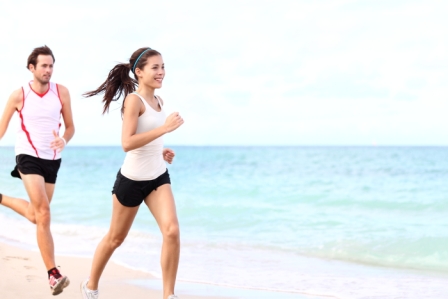Quite often people present to our office and say, “Doc, I think I over did it in the weekend”.
Picture this – after brief hiatus you decide that the garden needs tidying up, lawns need mowing, heavy rubbish needs to go to the tip, all in ONE day! Low and behold you spend the next few days riddled with pain and find yourself blaming all the hard work you did in the weekend on your discomfort. Often people jump to the conclusion that the activity was the problem, however it was most likely the lack of activity preceding the new task that caused the problem. Remember, our bodies are designed to be dynamic they shouldn’t break down after doing trivial movements.
People also say to me “you must be more busy in winter, due to sports injuries”, however because of the focus in our office, we don’t tend to see a significant increase in sports or seasonal related injuries. During spring we do see a blip of injuries due to people “overdoing it”. More the case is they have underdone it for a while, and the burst of energy to get into the garden, and outdoors all at once has seen the body say, “what’s this activity? I’m not used to this!” Ever remember feeling those muscles you haven’t used in a while after starting a new activity? The term for all this discomfort following a recent bout of new activity is called “de-conditioning syndrome”. The same problem occurs, say the first time you go to the gym, play a sport, or just try an activity you haven’t done for a while.
 Often the winter months are a time, because of weather and lack of daylight hours, that we spend more time on the couch rather than getting out and being active. Starting off slowly makes sense to most people – they wouldn’t go to the gym for the first time and use every machine, lift every weight on the rack, and expect to feel like a box of fluffy ducks afterwards. Likewise as we push closer to spring and the summer months – you shouldn’t try to do too much on the first go at achieving a task whether it be a spring clean, a climb up the Mount, or the new gym regime. While it’s sensible to take things easy to start with – it’s important to note that often a sudden burst of activity may not be the actual cause of your discomfort. Put strain on an already underlying imbalance, weakness or problem that you may or may not be aware of, and you are potentially going to experience a plethora of secondary problems. What am I saying is this; an underlying spinal imbalance could potentially be the cause for further injury or secondary problems when more strain is applied to an area that is not structurally correct, something “has to give”. How do we stop these problems from occurring? Keep reading below to find out.
Often the winter months are a time, because of weather and lack of daylight hours, that we spend more time on the couch rather than getting out and being active. Starting off slowly makes sense to most people – they wouldn’t go to the gym for the first time and use every machine, lift every weight on the rack, and expect to feel like a box of fluffy ducks afterwards. Likewise as we push closer to spring and the summer months – you shouldn’t try to do too much on the first go at achieving a task whether it be a spring clean, a climb up the Mount, or the new gym regime. While it’s sensible to take things easy to start with – it’s important to note that often a sudden burst of activity may not be the actual cause of your discomfort. Put strain on an already underlying imbalance, weakness or problem that you may or may not be aware of, and you are potentially going to experience a plethora of secondary problems. What am I saying is this; an underlying spinal imbalance could potentially be the cause for further injury or secondary problems when more strain is applied to an area that is not structurally correct, something “has to give”. How do we stop these problems from occurring? Keep reading below to find out.
Barring a pathological process, congenital related problems, and fractures, here are 3 points on minimising injury and getting the most from your body.
1. Remove any structural problems before you start
Ever had some renovations or building done, and the structure and foundation was not correct? The builder knows it is wise to build on a solid foundation to reduce further strain on the structure, and many potential secondary problems occurring later on in the project. Chiropractic research suggests ‘Chiropractic care improves the communication between the brain and body and results in better control of the core muscles during body movements, so that your spine is at less risk of injury’. We are also starting to see research developing which suggests that a single session of chiropractic care may improve muscle activation and increase muscle contractions equivalent to findings following three weeks of strength training. This line of research also suggests chiropractic care may possibly reduce muscle fatigue developing during strong contractions.

Just like a building, our body, most importantly our spines, needs to be free of any structural shift or deviation to reduce potential secondary problems occurring. Getting a protective check or maintaining your structural alignment is as easy as a trip your your chiropractor, in fact you will find it is generally more cost effective to fix the underlying problem first, rather that wait for pain or injury to occur.
2. Break it up
Don’t do it all at once! A runner does not make his or her first run a marathon. While that may be the ultimate goal, generally they start with a few short runs, then they extend their running in steady increments. Likewise that new activity needs to be broken up in to achievable goals, don’t spend all your time doing one repetitive process or movement. Aim to change your activity or movement type every 20-30 minutes.
3. Keep active daily
Don’t forget to keep active, even in the “off season”. Provide your body with a range of activities and dynamic movements during the day, every day! This helps to condition your nerve system, muscles and joints so they are “ready to go”, and can control your task more efficiently!
So as summer comes around – whether it be the spring clean around home, getting that beach body back, or just a new exciting adventure or sport you are planning to undertake, first make sure your body is ready and structurally correct, ease into the task, and enjoy whatever you love doing!
Ed

0 Comments